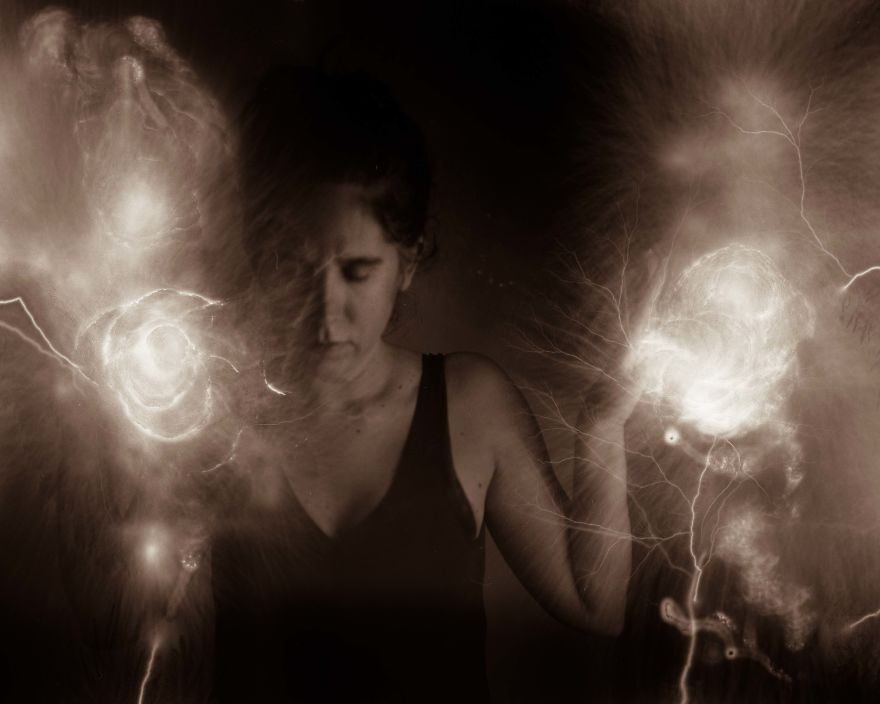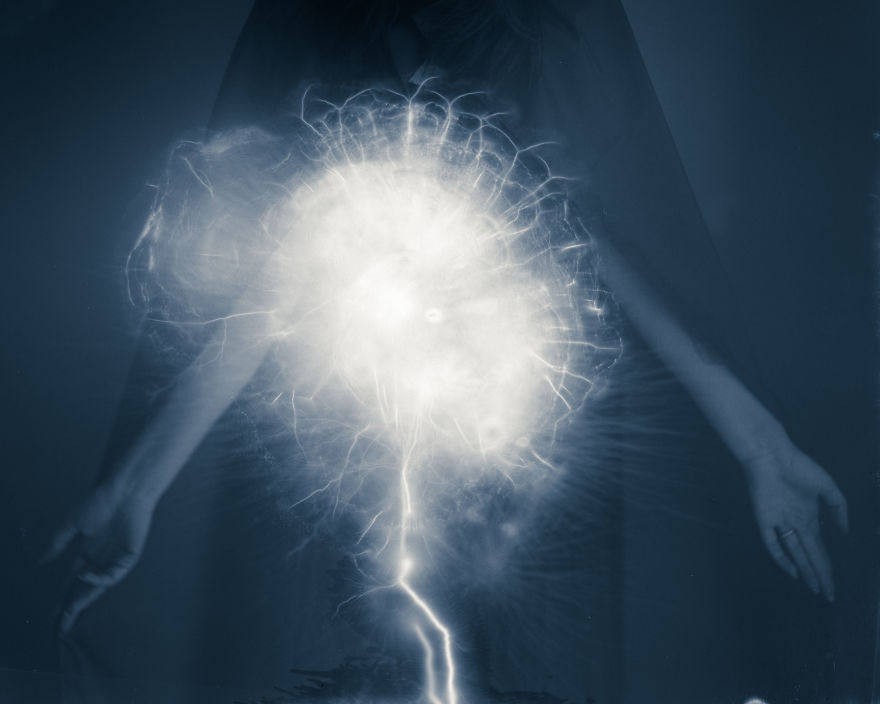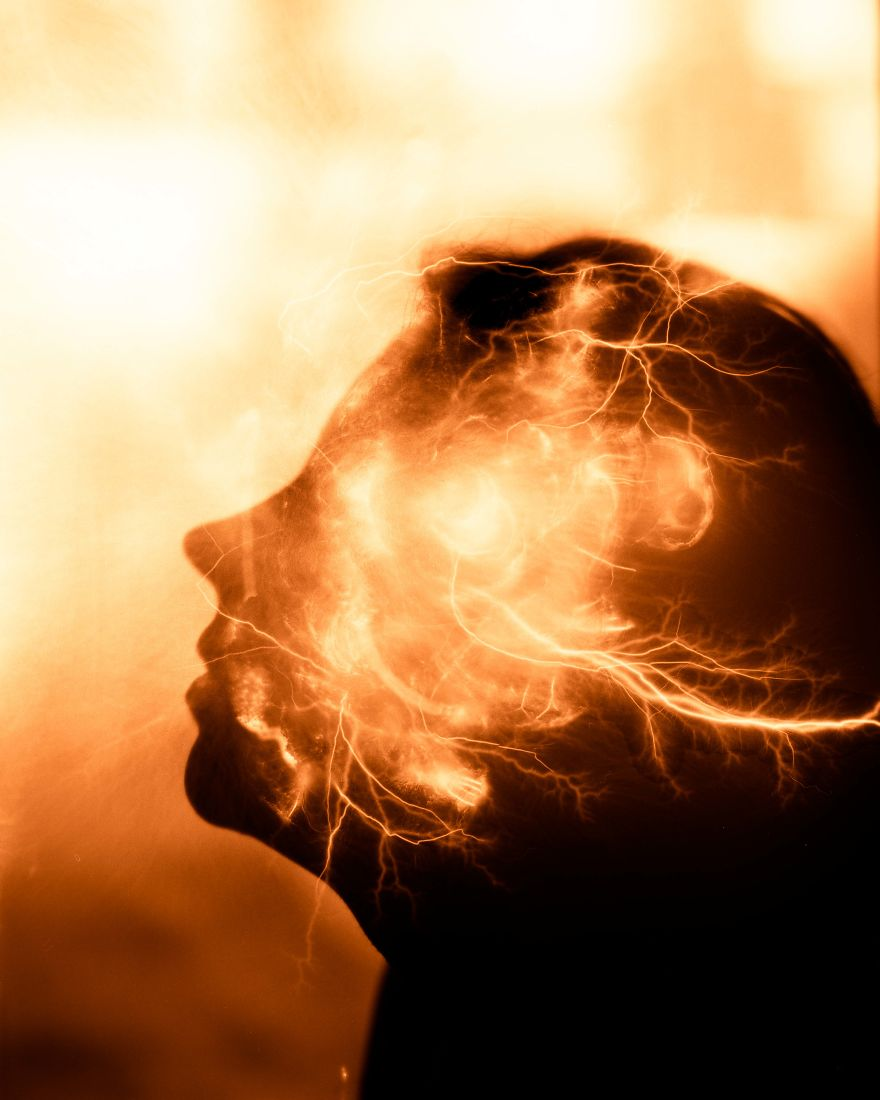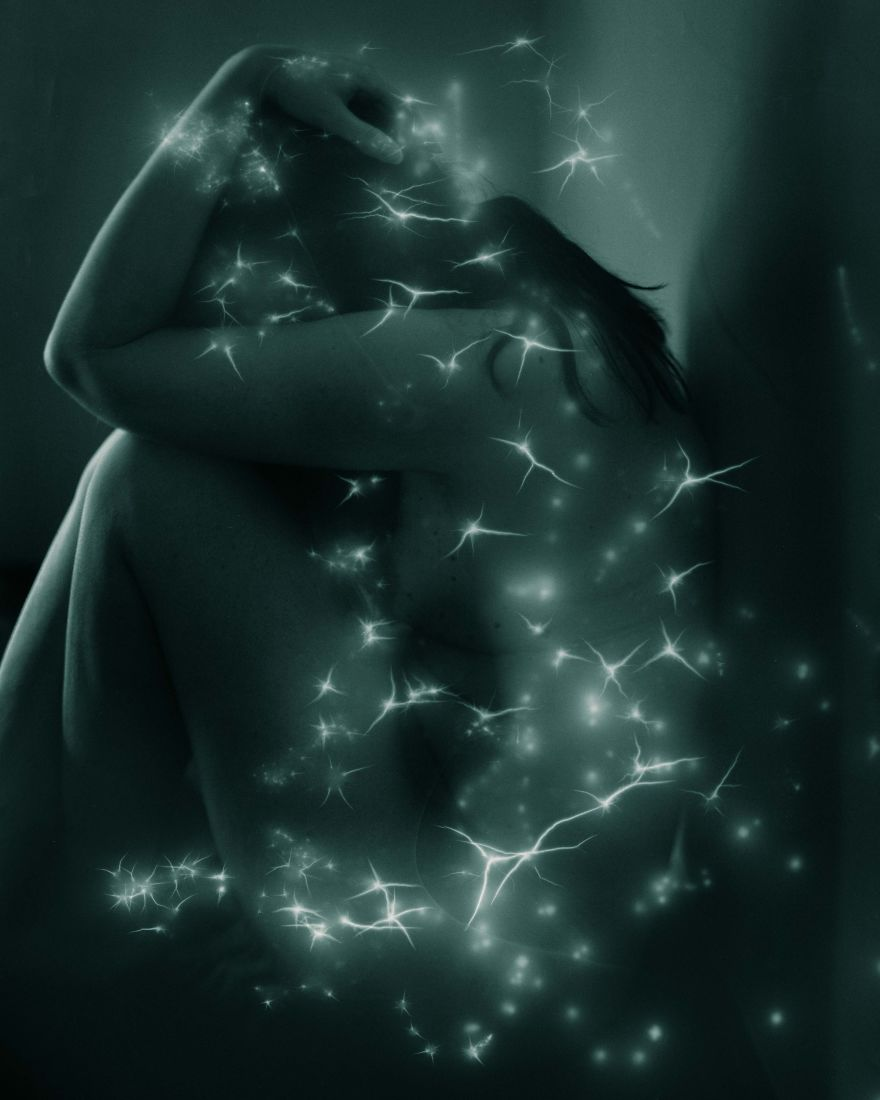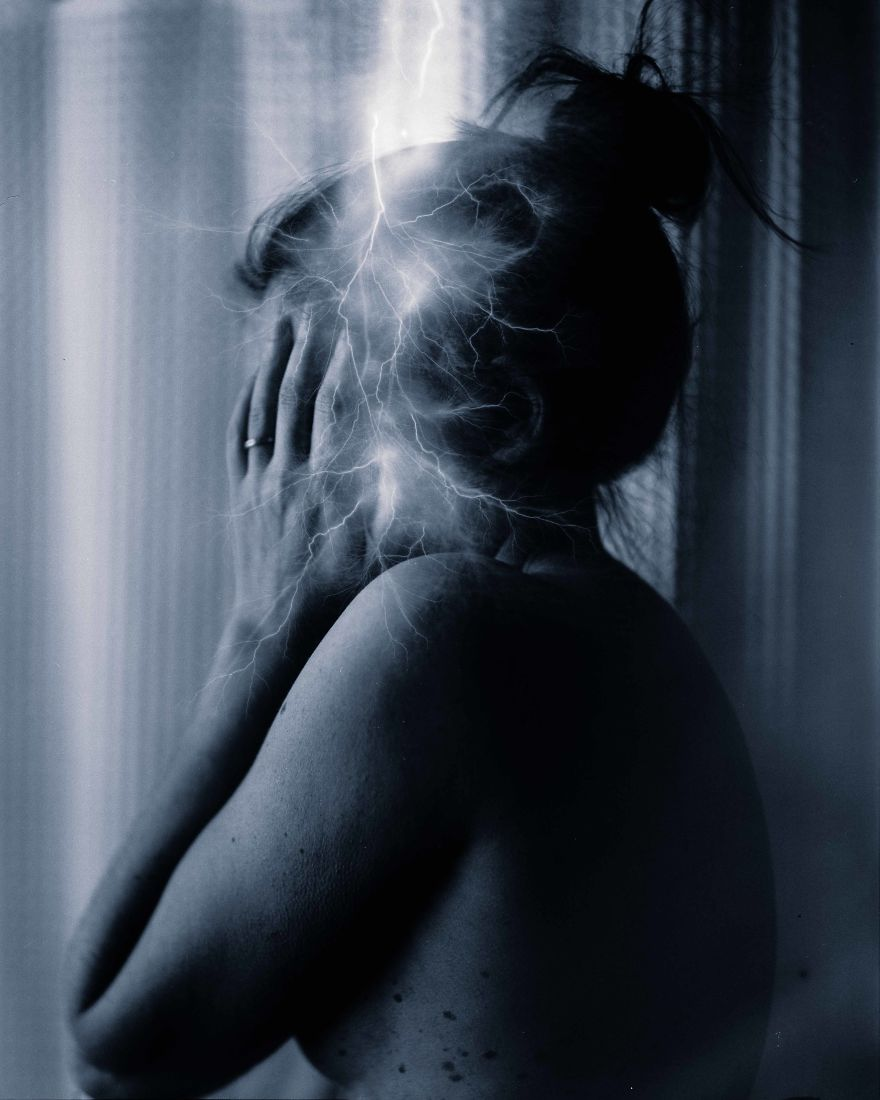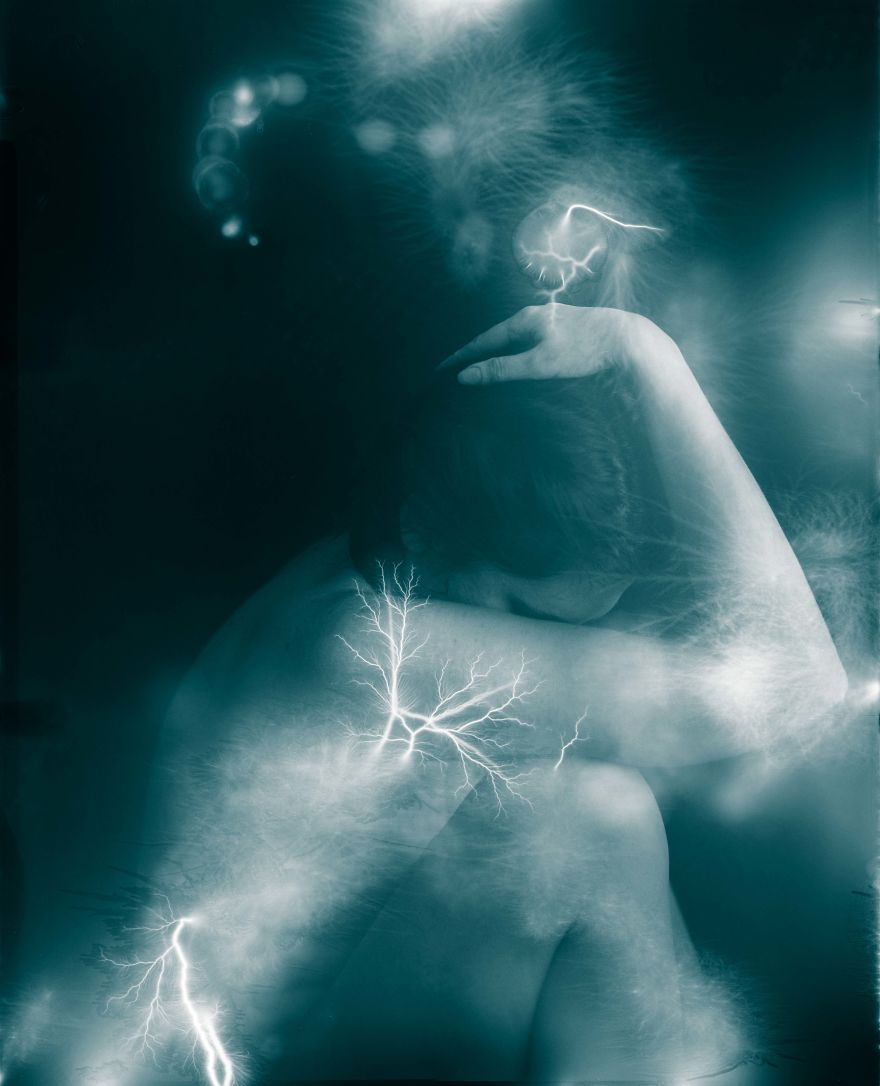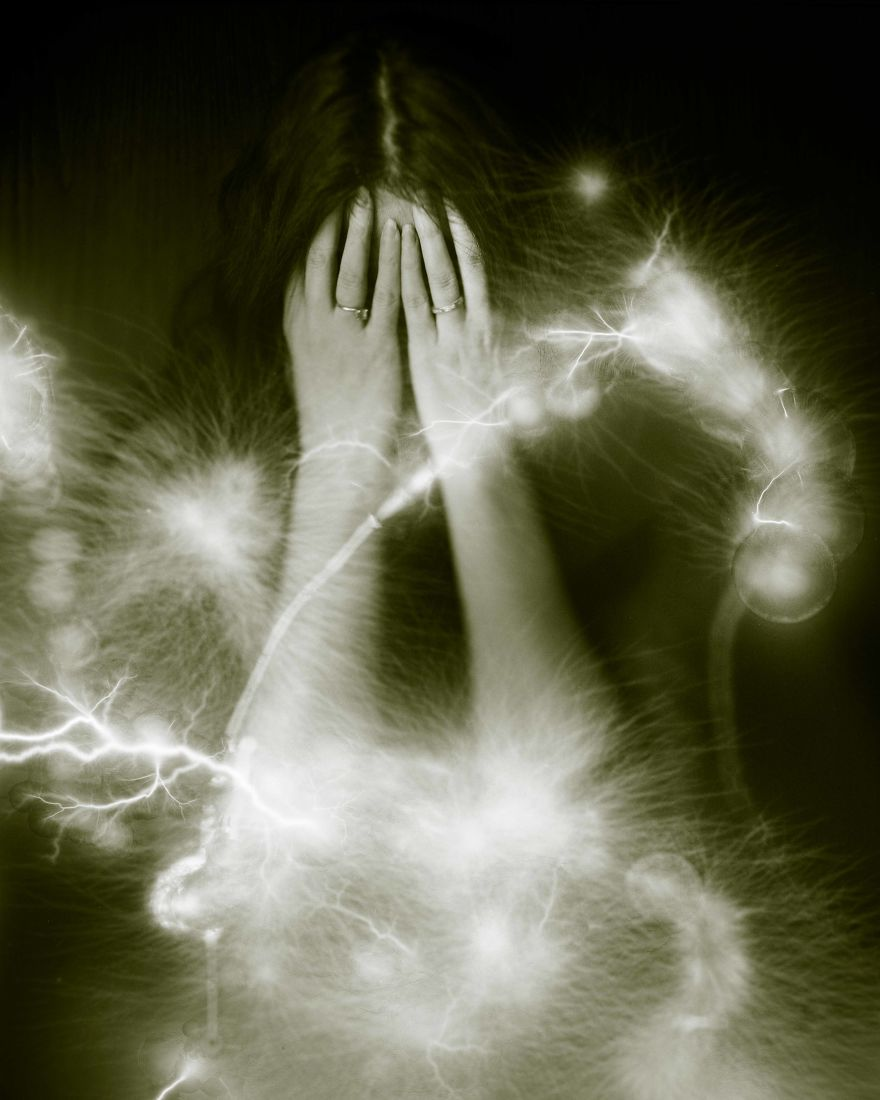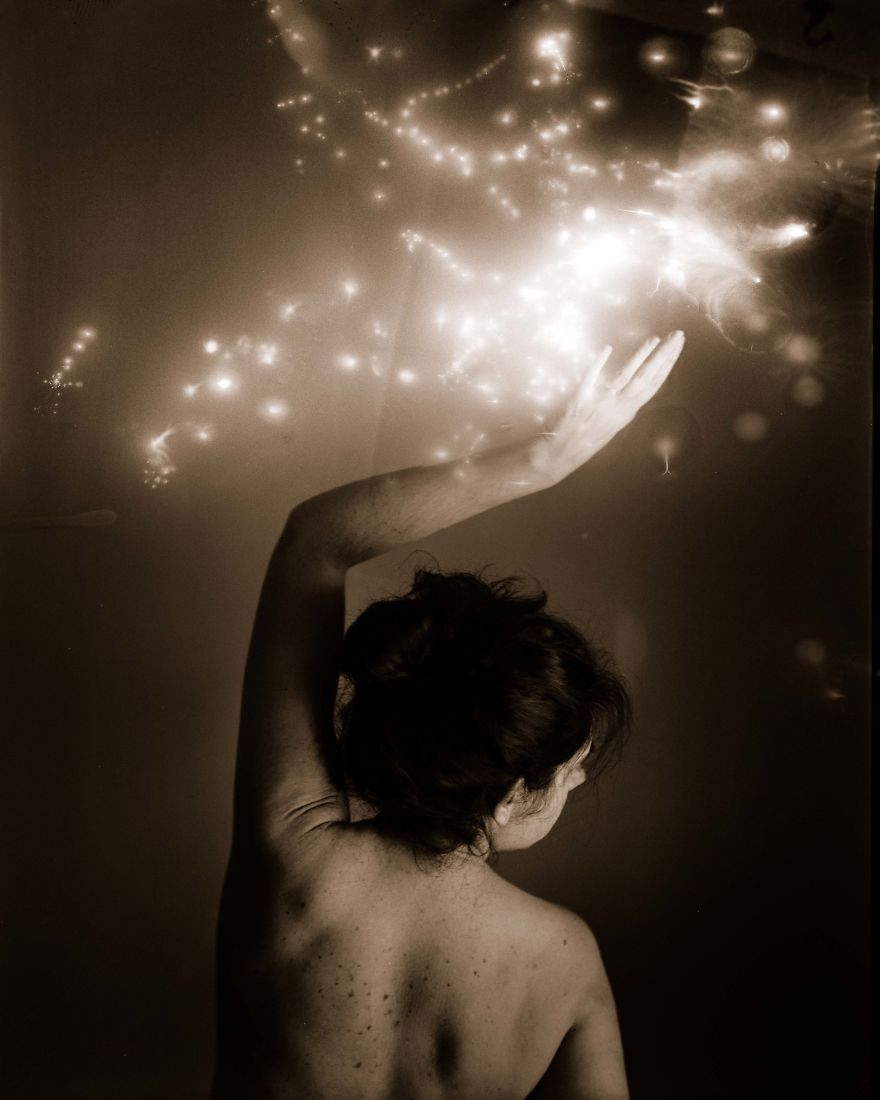If you have ever had anxiety, you can confirm the fact that it is one of the major barriers to the creative thinking process.
However, anxiety can sometimes be a source of bringing out the hidden beauty of things.
Kate Miller-Wilson, a photographer who also writes for Bored Panda, tried zapping exposed films with a static electric charge to express abstract concepts on her photographs.
“In this self-portrait series, I harness static electricity to create random patterns of light on film,” Kate wrote on Bored Panda.
“The light is magic, revealing things we can’t see in an ordinary photograph—things like vulnerability, strength, creativity, and inner thoughts.
“There’s no control over the static, but it’s a powerful tool if you know how to use it.”
Kate has been taking pictures daily for five years now. She started her journey with digital photography. Her first project was the photos of her son with autism, which were later published as a book.
After that, Kate shifted to film, learning to shoot and develop the medium format.
The next step of Kate’s photography passion was starting to work with large format film. “It is my favorite (this is the kind of camera where you stand under a dark cloth to focus),” she said.
“I shoot 4×5 film every day, usually portraits of my family or self-portraits. I have had my work in several gallery shows around the United States.”
Kate claims that the technique of using a static electric charge to zap exposed films is something no one tried before her. She saw an accidentally zapped film a couple of years back and found it intriguing.
She said: “I started researching how you could shock film with static and decided to try a Wimshurst machine to get double exposures.
“It took a lot of experimentation, but it worked! I decided to try it because I thought the electric shocks could represent invisible emotions in a photo, and I love to find ways to show emotion in my work.”
To show a glimpse of how the zapped photos look like, the photographer shared some photos she has created by zapping exposed films. Have a look at them below.
1. Like A Wave
About this photo, Kate said: “As the mom of a child with autism, I’ve struggled with anxiety for many years.”
According to Kate, photographing her son gave her a sense of relief. The camera was no merely a source of spending a good time but also a way of reducing the anxiety she had as a mother of an autistic child.
Kate explains that for people with anxiety, every little thing is a cause of distress, from deciding what to cook for dinner to thinking about what would be their ultimate fate.
2. Find The Fire
In her self-portrait series, Kate purposefully exposed a large film to static electricity to create double exposures, creating abstract formulations of random light and patterned shapes.
She explained: “I shoot mostly with large format film cameras.
“Those are the big, old-fashioned cameras where the photographer goes under the cloth to focus. Each shot is made on a sheet of 4-inch by 5-inch film.”
3. Glow
Talking of this photo, Kate said she captured a self-portrait on a film and took it to a dark room where she exposed it to static electricity with a device invented back in the 1800s.
“A Wimshurst machine, a static generator, which is now a fixture in many science classrooms. It has a big crank you turn with one hand. As it builds up a charge, sparks leap between two metal spheres. If you put your hand in there, you’ll get a zap, but it’s not going to kill you,” she said.
4. Strength In Vulnerability
Kate explains that using static charge to create photos expressing nonmaterial concepts comes with its own risks.
There are risks of getting electric shocks, destroying the expensive films entirely or not getting the results you expected. In Kate’s own words, “you need to be ready to be vulnerable and give up some control.”
5. Wounds Have Energy
Through her work, Kate wants to raise awareness among people, making it clear that chaos can be beautiful, that you can harness the negative energy of anxiety to convert it into something useful.
Just like she uses the static charge to decorate the photos, despite the fact that it can actually destroy them.
6. No Shelter
Explaining the technique she uses to create these photos, Kate says that she sets up the background against a big window and then takes the meter readings to take the photo on four 4×5 films.
7. Loud Mind
Probability is one of the major factors at play when doing static tricks with the film. You can get a shape of lightning or fire a globe of light, but there are equal chances of overexposing and totally destroying the films.
So, according to Kate, there is a lot of luck involved in this process.
8. Light It Up
Talking of the probability of getting a desired or an undesired result, Kate says she can only see the results of her work only after the film is fully developed.
When the photo comes out after washing, that is the time when Kate knows whether she has been successful in making a masterpiece or has wasted hours on a few dollars’ worth of film.
Replaced!



